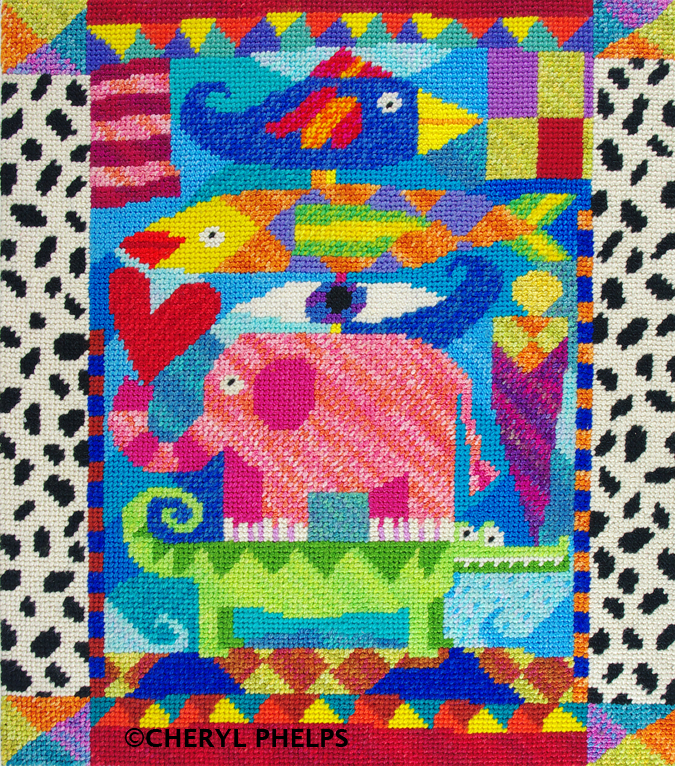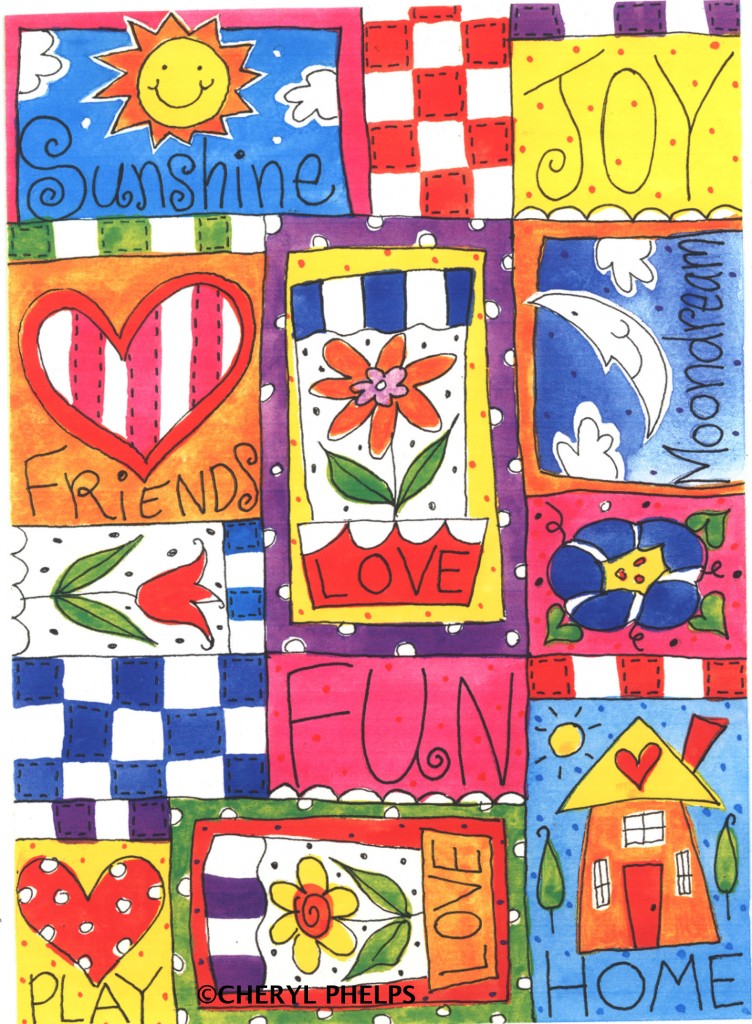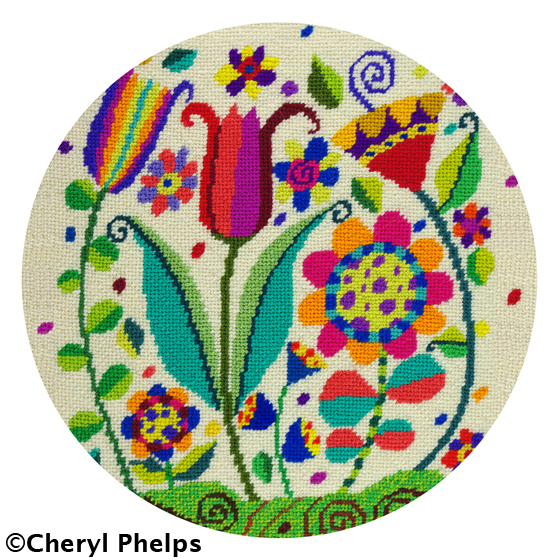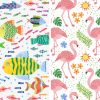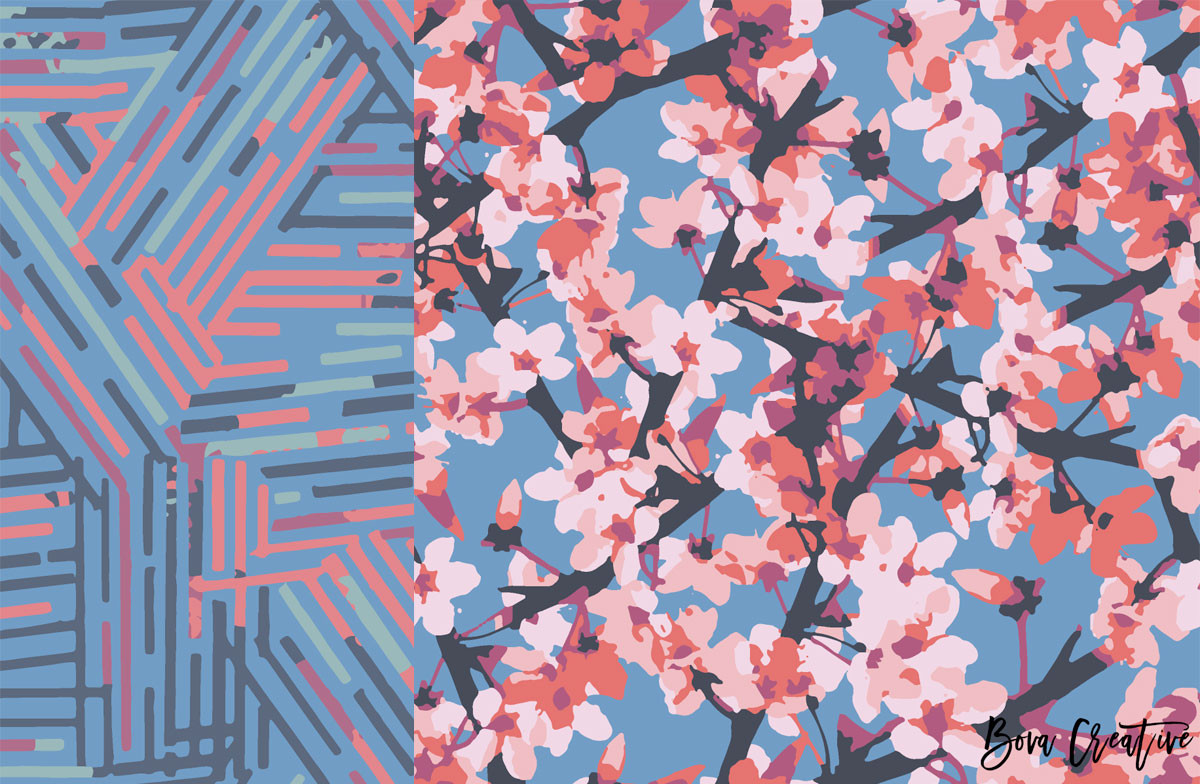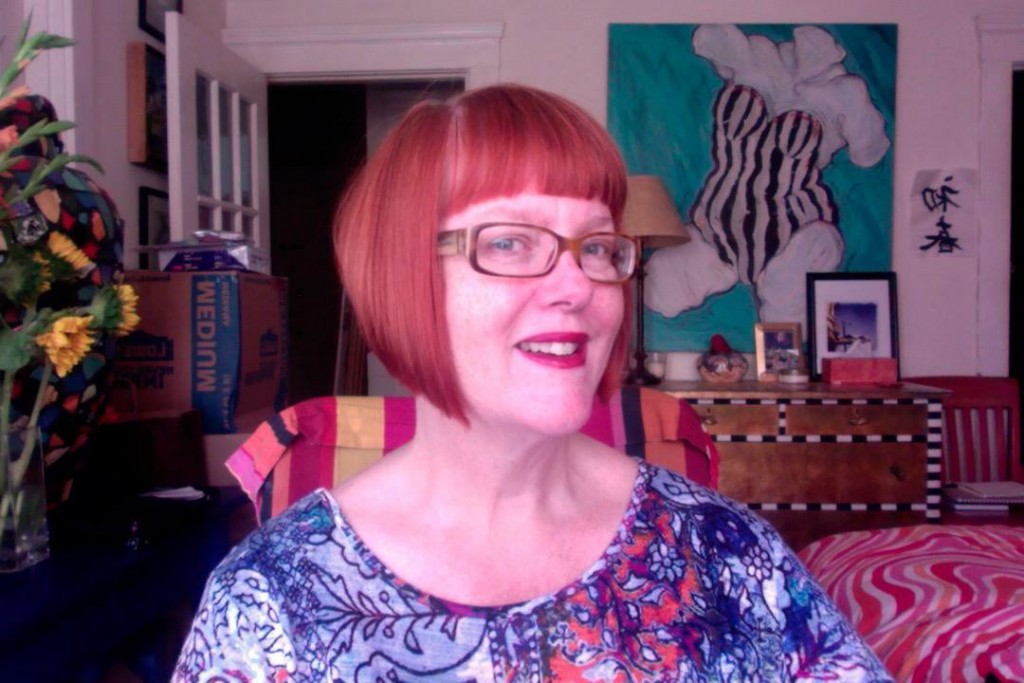
Please tell us about your design background and career path. How did you become interested in the world of surface pattern design and art licensing?
I received a Double Major BFA in Surface Design and Painting at the Memphis College of Art and worked for Hallmark Cards as an Artist in Kansas City, designing cards, stationery, gift wrap, paper party decor and more. I’ve been a freelance illustrator, designer, and teacher since 1987. I do workshops, seminars and art licensing consulting and coaching. Surface pattern design has been a passion of mine throughout college and my art career. Over the years, I have sold tons of prints to the garment, paper, gift and home decor market and in 1997 added art licensing to the mix. I have exhibited my surface design prints, humor characters and illustrations in the two art licensing trade shows for 14 years total, 11 years at Surtex and 3 years at the License Expo. Art Licensing has been a way for me to take a single print and spread it across multiple product platforms and years of income, rather than just a one off flat fee sale of the print.
 Tell us a bit about your design process. What media/design tools do you like to use? What are your go-to sources for design inspiration? (Books, blogs, magazines, etc.)
Tell us a bit about your design process. What media/design tools do you like to use? What are your go-to sources for design inspiration? (Books, blogs, magazines, etc.)
Primarily I work in Gouache with brush, ink and some computer. I like to paint and then scan the image into Photoshop on the computer, for archival purposes and for adjustments, applying the painting to different product prototypes.
My “go-to sources for design inspiration”, is first, my own imagination. I tease people who ask me that, and usually say, I have so many ideas waiting to come out of my hand, it’s like the planes circling, waiting to land at LaGuardia! There just isn’t enough time to paint all the ideas I think of.
Of course I am addicted to Facebook and seeing my friends wonderful creations. Other artists following their passions in their work, inspires me. I enjoy checking in on DesignSponge.com, Print + Pattern, FoltBolt and Colossal on Facebook.
What role do trends play in your design process? What are your current favorite print & pattern trends for the stationery market?
Trends of color, subject matter and styles can be helpful for artists who might need a jumpstart to do a collection or address industry and market needs. The challenge is being on the forefront or midpoint of a trend and not the saturation or downside of it. For me personally, and what I tell my students and consulting clients is, Try being more of a Trendsetter, instead of always being a Trend Follower. The cosmos is always sending you ideas, whispering inklings of what to paint or create next and I try to listen, because the cosmos sends other artists ideas every day too. That’s how trends can start out of seemingly unrelated sources and artists. Color trends can be helpful, but colors can be changed, so I don’t let that dictate my color choices. As an example, “Greenery” may be Panatone’s color of the year for 2017, but more than that exact color, it’s telling that “Green”, is in and that can apply to a color or a mindset.
My favorite trend that is always a staple for me is, Nature. Florals and Botanicals are applicable for both Everyday and Seasonal occasions and can be applied across a broad range of products from stationery to home decor and more.
Could you talk a bit about the design cycle for stationery? How far ahead do you design stationery before it lands on the sales floor?
Different products have different lead times. Calendars, as an example are a year and a half to two years out, because calendars for the following year go on sale in the middle to end of the preceding year and there are so many illustrations, designs and photos needed to complete just one calendar. Cards and stationery fall into a 6 month to one year design process before they hit the retail shelves. Production times are getting faster from design to manufacturing to retail delivery. Holiday specific is one to one and a half years out, especially Christmas and Winter Holiday as it is ordered at trade shows in May and on the retail floor by September in time for sales through the end of the year. Everyday sending occasions like Birthday are a 6 month to one year cycle out. Consistently across the paper industry, one year from design to retail is pretty much the norm.
Could you tell us about your experience with stationery buyers and what they are looking for? What can designers do to stand out?
Stationery companies are always looking for Birthday, Christmas, Winter Holiday themes, Florals for Everyday and Seasonal, Print Patterns, Humor, Animals, Fun, Whimsical and Celebratory.
The most important thing a designer can do to stand out is; be unique and express your own creative voice through your work. This is where paying attention to your own artistic visions comes first. I walked Surtex last year and so much of what I saw was the same! Yes, there are some incredibly talented stand out artists and designers who exhibit solo or through their reps and agents at Surtex and the License Expo, but also many who seem to be doing the exact same look.
If you want to stand out, ask yourself; What is your brand? What unique design and artistic expression do you bring to the creative mix? Start with that and then create solid collections of groups of designs or illustrations that can be placed across a broad spectrum of products within the industry. Begin with a central figure or design motif theme and create coordinates that go with it. I call it creating the Prom Queen/King and their Court. Buyers love artists who can create in both collections, as well as individual one off prints. Thus the reason Surtex features both, art licensors specializing in licensing focused collections and
print houses that sell one off or groupings of prints.
What are some of the challenges of designing for stationery? What do you love about it the most?
I’ll start with what I love most. I absolutely love painting, playing with color combinations, working with line and composition and the dance of pattern on the paper. I think of music when I work and the idea that the design motif has a rhythm that resonates on the page, to create the flow and spacing in a pattern. I love the magic that can happen when your imagination manifests a piece that entertains you, as well as the buyer.
I love the idea phase, brainstorming designs and new product applications. I still get a thrill when I see my artwork on cards and other products in the retail stores. And, I love working with other artists and designers in the collaborative process of bringing a seed of an idea, from concept to finish, then to market and to the end consumer, to purchase for all kinds of celebrations, decorating and communicating, with my art as the visual vehicle for those interactions.
Challenges, yes, they are numerous, but for me they are not so much around the designing. The business side of my art biz presents the biggest challenges. Some budgets and fees in the Stationery and Gift markets have not reflected cost of living increases. Some contracts tend to favor companies, more than the artists and some companies have eliminated paying advances for art licensing, instead paying after first quarter of sales or trying to bargain for all flat fee, sales buyouts.
Many companies in the industry, now expect artists and designers to be three artists in one, from art/print/designer, to packaging design and catalog designer, all rolled into one, for one fee, for all those aspects! With most artists being computer savvy now, they are expected to do multiple jobs, for the same fee they used to get paid, to design the print or illustration for. I’m a fierce artist advocate and each of those services used to mean more individual jobs for creatives. Even with all the challenges, there are still many prosperous, mutually fair, artist and client partnerships, that make it all worthwhile. Artists and Designers
continually have to value our own worth in this industry and acknowledge the success we bring to the client’s products with our creative work.
Who are your design heroes (past or present)? What about them inspires you or influences your work?
At the very foundation, since my days in art school, has been a love for fine art, that also has a sense of design. I love Matisse for his color, Picasso’s flowing line, Miro and Calder for their painterly and sculptural whimsy. My contemporary art pals and fellow designers also inspire me, they are too numerous to mention, but I appreciate all of them, for their friendship and motivation
What would you consider to be your most proud achievement(s) or greatest success(es) so far in your design career? What are your goals for the future?
As a personal achievement, I’ve been in this biz a very long time. Art has been my job forever! It’s been fun to see my artwork on all kinds of products. As a veteran of the industry I’ve been happy to share by experience and knowledge with other creatives through my teaching, workshops, coaching and consulting. I’m very proud of being part of other artists paths to art licensing success as well as celebrating my own journey as an artist, designer, illustrator and teacher.
What advice have you received in your career that has stayed with you or influenced you? Do you have any words of wisdom for aspiring designers trying to build successful careers of their own? Any advice for designers hoping to break into the stationery market in particular?
Best advice I ever received: Breathe!
Words of wisdom for aspiring designers: Believe in yourself and your talent, the Universe doesn’t bring you this far to drop you.
Advice for designers hoping to break into the stationery market: Research Holiday and Everyday sending and buying occasions, it is the starting point to designing for the Stationery and Gift industry.
Interested in learning more about the stationery market? This training will be available exclusively to Textile Design Lab members–join here to gain access!


